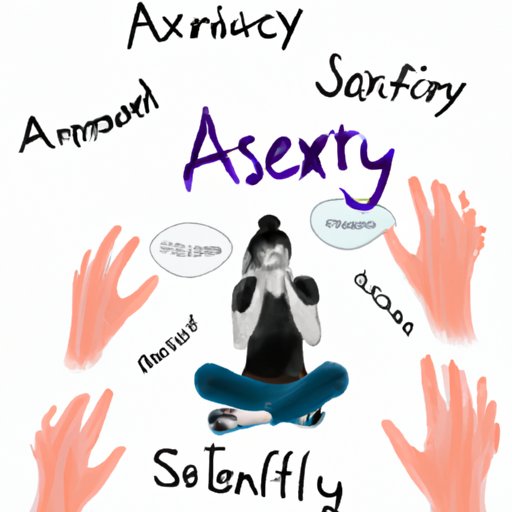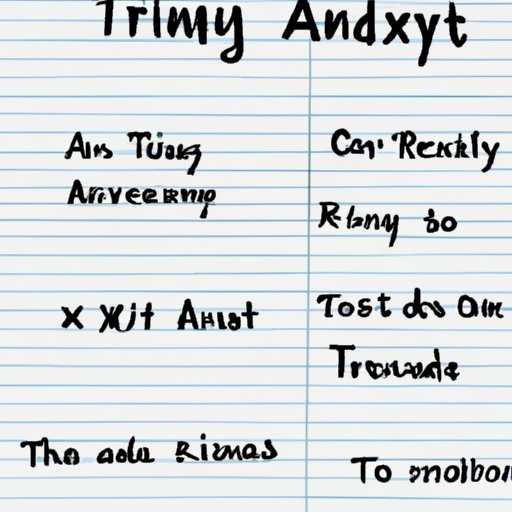Introduction
Anxiety is a normal emotion that everyone experiences from time to time. It is a response to stress or danger, and it is characterized by feelings of worry, nervousness, or fear. When we write about anxiety, it’s important to capture the essence of this emotion in words so that readers can relate to it and understand what characters are going through.
In this article, we will explore different ways to describe anxiousness in writing. We’ll look at how to use sensory language, physical expressions, mental states, metaphors, dialogue, and more to create vivid images that bring anxiousness to life on the page.

Use Sensory Language to Illustrate the Feeling of Anxiety
One way to convey anxiousness in writing is to utilize sensory language. Describing physical sensations can help readers feel like they’re experiencing the same emotions as characters. For example, you can describe a racing heart, sweaty palms, shallow breathing, or a tight chest.
To make the scene even more vivid, you can include details about how these sensations feel. For instance, you can describe a character’s heart pounding in their chest or the sensation of their palms being slick with sweat.

Incorporate Physical Expressions of Anxiousness
Anxiety often manifests itself in physical ways, and these expressions can be used to illustrate how a character is feeling. Some common physical expressions of anxiousness include pacing, fidgeting, biting nails, wringing hands, or clenching fists. These can be used to show a character’s nervousness or fear.
Describe Mental State Associated with Anxiousness
When a character is feeling anxious, they may also have certain thoughts running through their mind. These can range from worries about the future to fears of what could happen. To capture this mental state in writing, you can use phrases such as “ruminating thoughts” or “a sense of impending doom.” You can also use words like “dread” or “uneasy” to show how a character is feeling.
Utilize Metaphors to Convey Intensity of Anxiousness
Metaphors are a great way to give readers a better understanding of how a character is feeling. For example, you can describe anxiousness as a storm brewing inside a character or a wave of emotion that is crashing over them. This can help readers visualize the intensity of the feeling.
Include Dialogue that Conveys Character’s Inner Turmoil
Dialogue is another effective way to show a character’s anxiousness. For example, a character might say something like, “I can’t stop my mind from racing” or “I just feel so anxious all the time.” These lines can help readers understand the character’s inner turmoil.
Utilize Words with Negative Connotations
Using words with negative connotations can also help to convey the feeling of anxiousness. For example, words like “fearful,” “apprehensive,” and “worried” can all be used to show a character’s emotional state.

Make Use of Imagery to Create Vivid Picture
Imagery can be used to create a more vivid picture of a character’s anxiousness. For example, you can describe a character’s facial expressions or body language to show how they are feeling. Additionally, you can use descriptive words to paint a picture of the environment around them and how it reflects their emotional state.
Conclusion
Writing can be a powerful tool for conveying emotions. In this article, we explored different ways to describe anxiousness in writing. By utilizing sensory language, physical expressions, mental states, metaphors, dialogue, and more, writers can create vivid images that bring anxiousness to life on the page.
By following these tips, writers can create scenes that accurately depict a character’s anxiousness and evoke empathy from readers. With a little practice, writers can use words to capture the essence of this emotion and create compelling descriptions of anxiousness.
(Note: Is this article not meeting your expectations? Do you have knowledge or insights to share? Unlock new opportunities and expand your reach by joining our authors team. Click Registration to join us and share your expertise with our readers.)
